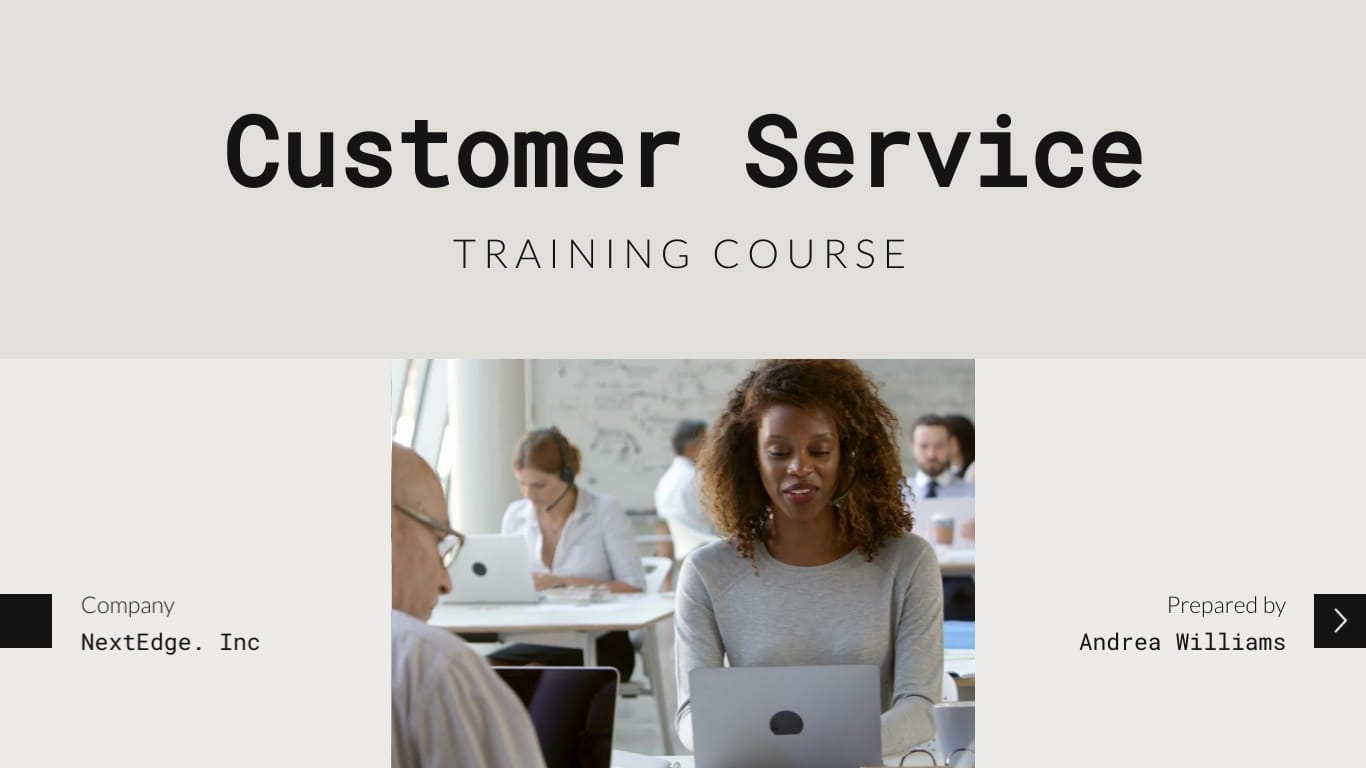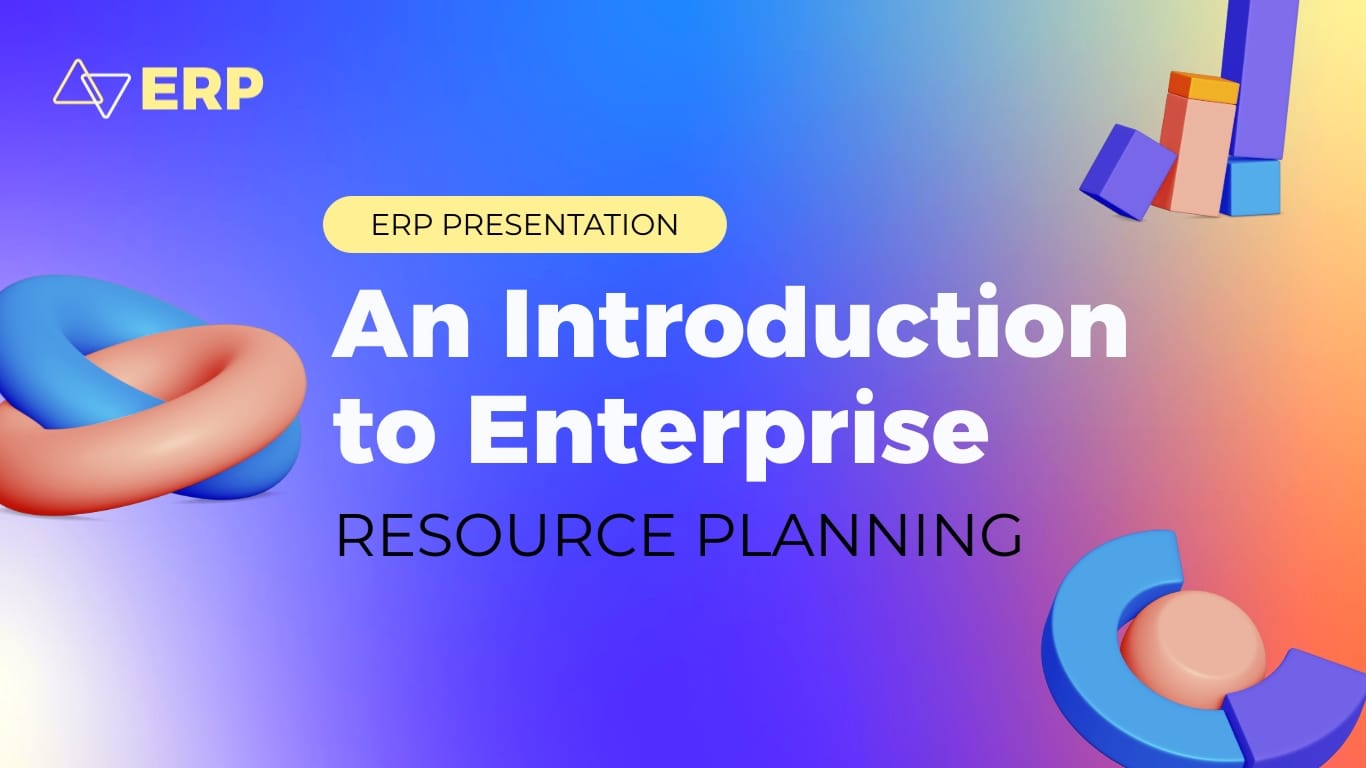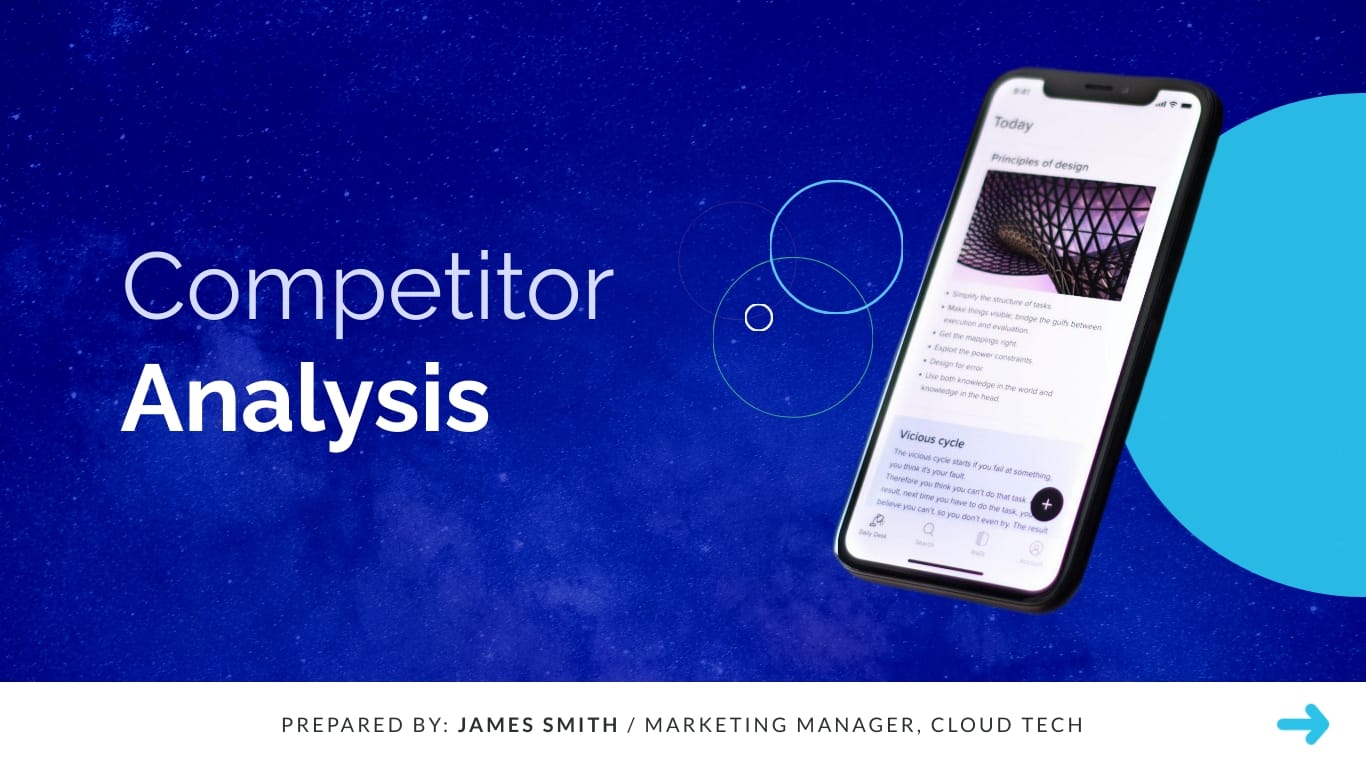

Creating a presentation can be nerve-wracking, especially when you're staring at a blank slate.
You’ve probably got tons of ideas bouncing around, but turning them into a slick, impressive presentation is proving a hard nut to crack.
News flash: You’re not alone.
About 80% of presentations fail to deliver their objectives due to poorly organized information, a lack of preparation and scruffy slide decks.
So, how do you avoid this disaster? It all boils down to having a solid presentation outline. Think of it as a roadmap that helps you organize and share your ideas in a clear and logical way.
With the right presentation outline, you can stay on track, keep your audience hooked and ultimately convey your message with clarity and impact.
So whether you're pitching to investors, partners or clients or preparing a presentation for a conference, this article has everything you need to know about writing an effective presentation outline.
A presentation outline refers to the barebones version of a talk or a speech that summarizes the main points and takes the general direction of the pitch. It allows presenters to structure the flow of information in a manner that is easy to understand.
Without an outline, your presentation can be a nightmare. You could end up shuffling slides around indefinitely and appearing confused. To avoid this situation, the outline clearly lists out everything you want your presentation to achieve.
Before creating your outline, consider the goal of your presentation, who will listen to it, and what interests them. This will help you organize your content to keep them engaged.
Here’s an excellent example of a presentation with an outline.
















An outline for presentation is a valuable tool that can assist you in several ways:
Now that we know why we need to make a presentation outline, let’s dive deeper into how you can write a presentation outline.
Decide on the goal of your presentation before you start writing any notes. It serves as a base for the remainder of your outline. Your presentation may have one of the following six objectives: to inform, convince, motivate, inspire action or entertain.
A business, for instance, might use presentations for various reasons. A sales presentation outline would try to convince potential customers to buy a product, while a training presentation might educate staff members on new techniques.
Once you determine this, answer the following questions to specify the purpose.
Upon answering them, write your purpose and summarize it into one or two sentences, then put that on your first slide.
Making an excellent presentation starts with a great outline. But the structure is what amplifies the impact of your delivery.
An eye-catching introduction, a body and a conclusion emphasizing your primary ideas are the three essential components of a successful speech.
Here’s what you should include while creating the structure of your presentation.
Now that you know what to include in the structure, let’s break it down step by step about how to write the outline.
When brainstorming, consider the most important things you want to discuss. These could be key points, stories to share, or facts and numbers you want to tell your audience. Write them all down, even if they initially seem a bit random.
Armed with a bucket list of ideas, you must later organize and group them. Look for patterns, connections and relationships between your ideas.
Find the most important idea—the main thing you want to tell your audience. Make sure it's clear, short and something they'll find interesting. Recheck your ideas and remove anything that doesn't match your main message or the people you're talking to.
Now that you’ve gathered ideas, it's time to build the framework for your presentation.
Introduction
Begin by introducing your topic and explaining why it's essential. Think of it as the curtain-raiser that gets your audience's attention. Also, clearly state the main point you'll discuss—your "thesis" or purpose for the presentation.
Body
Create a skeleton outline of your presentation by breaking down this main message into smaller parts. Use bullet points or headings to organize these bits of information.
Think of the main points as the big chapters and the subpoints as the smaller sections within those chapters.
To make your presentation flow smoothly, add transitions between your points. These can be simple phrases like "Let's move on to the next point" or "Now, let's build on what we've just discussed." And when you're nearing the end, use a transition like "In conclusion."
Once you have your skeleton outline, add supporting evidence to each point. It could include statistics, case studies, quotes, images, or videos. Make sure whatever you add fits well and backs up your main message.
Conclusion
As you reach the end of the presentation, tie everything together with a solid conclusion. Start by recapping the main points you covered throughout your presentation. It helps reinforce what you've shared and ensure your message sticks.
Next, emphasize the key takeaways—those crucial nuggets of wisdom you want your audience to remember long after the presentation.
Now, consider including a call to action. It is where you invite your audience to do something based on what they've learned. It could be as simple as asking them to share their thoughts, sign up for more information or even take a specific action related to your topic.
If you're feeling creative, create a unique call to action that inspires your audience to engage further.
For instance, if you’re presenting a project presentation to a group of people, you might seek to win their support for your idea or get them involved in its execution. Your audience should know what they get from taking action.
If you need help generating ideas for your presentation, Visme AI writer can help. You can enhance your outline content with fresh angles, Call to Action (CTAs), examples and data points.
Remind the audience of your central point and express gratitude for their attention in the conclusion if the presentation doesn't require a call to action.
As your presentation winds down, open the floor to questions or discussion. It encourages interaction and lets your audience clarify any doubts they may have.
Lastly, list the sources you used in your presentation and acknowledge any individuals or organizations that contributed to your research or material development. It adds credibility and respect to your work.
Read our guide to learn more about how to close a presentation with style. Also, watch this video to learn how to create CTAs that make your audience do your bidding.




Consider adding visual content, as it has a higher recall rate than text based or video content. It can add meaning to your message, increase interest and invite the viewer to click and consume your content.
Here’s an example of a presentation outline with a colorful image that makes the slide pop.


































Visuals can be anything from infographics, videos, photos, GIFs or memes, screenshots or illustrations. However, if you’re including statistics and research findings in your presentation outline slide, consider creating a visual representation of that data.
Visme’s data visualization tools make this easy. They take your data and turn it into beautiful and comprehensive visuals.
Whether you want to create bar graphs, pie charts, line graphs, area charts, histograms, or donut charts, Visme has a wide range of options.
Remember that you don’t need to include all of these visuals while creating the outline. Just mention where and on which slide you’d place the visual elements. It’ll help you organize your ideas as you dive into the body of the presentation.








































You must pay attention to the colors, design, layout and style to capture the audience's attention and interest. It must look consistent to give a neat look and feel.
When creating an outline, finalize what color combination and typography you'll use throughout your creative presentation.


























Below are the tips you should consider when deciding on it
Use color moderately
Everyone enjoys color; that is obvious. Nevertheless, using too many colors might result in chaotic, unattractive presentations.
Your audience's understanding and reaction to your presentation may depend on your color scheme. For instance, choosing dark and subdued colors when discussing a serious subject may be effective. Bright and bold colors may be preferable if your theme is engaging or imaginative.
You don't want the colors in your design to appear intimidating or overpowering to your audience since every color has both good and bad connotations. Hence, understanding marketing color psychology becomes essential.
Watch this video to learn more about color psychology and how to use it in your upcoming presentation design.




Optimizing your typography can impact how people interpret your message. Therefore, ensure your presentation slide looks well-organized and polished and conveys the intended information.
Here's how you can accomplish that:
































When putting out your presentation outline, using a tool like Visme can significantly improve your ability to create visually appealing and polished presentations quickly.
The templates from Visme are professionally designed to help you save hours and effort.
Hear what one of our customers has to say about our designs:
"Visme also helped us to free up our creative and design team to work on other projects across the organization. We created a supply of customizable templates they can cycle through and customize quickly on their own rather than waiting on a designer."
Manager of Partnership Marketing
Let’s get started on how you can make a presentation outline.
Log in or Sign up free to Visme and then click the "Create New" button.
Select "Presentations" from the "Project" menu to browse through Visme's collection of presentation templates. Use a blank or pre-designed template to start from scratch with your presentation design.
Visme offers 500+ presentation templates split into 20+ topic categories, including pitch decks, interactive, business and more. So even if you have no prior knowledge of presentation design, you will likely find an excellent template to use as a starting point.












































After you select the template, decide what visuals you will use in the presentation outline. The visuals you select will significantly impact the presentation's overall appearance and feel
Visme gives you access to thousands of high-quality, royalty-free photos and design assets To find your preferred image, browse and select using a particular keyword.








































And still, if you don’t find the perfect image for your design needs, you can use Visme's AI image generator to generate professional-quality photos, graphics, art, drawings and paintings.
You simply need to input an accurate prompt that describes what you want. The wizard will automatically generate and present multiple options for you. Additionally, you may use the Visme AI image photo editor to transform your photos into a masterpiece.
Selecting the right brand fonts for your presentation outline holds the same importance as choosing your brand colors.
If the chosen typefaces are of high quality, i.e., easy to read, it can positively impact the audience's understanding of the presentation's context.
But a font that’s too small or hard to read can lead to waning interest and the oversight of essential information. To overcome this situation, we recommend you check out the list of 20 best fonts for presentations for your upcoming one!


























Remember to limit the fonts you use to three: one for the title, one for the subheaders and one for the body of your text.
When creating a presentation outline, use your brand fonts to ensure the presentation better reflects your brand voice. This helps maintain consistency and uniformity.




































You can easily create and save your branding elements with the brand kit. Or use paste your website URL into Visme's brand wizard to automatically extract your brand assets (fonts, color and logo).
Moreover, to ensure that your key brand information is accurate across all slides while doing the outline, simply create new dynamic fields or edit existing ones. You can assign values and your data will update in real time, speeding up your editing process.
One of the most challenging tasks for a presenter is keeping their audience intrigued and engaged. Adding interactivity to your presentation can help attract and hold your audience's attention throughout the presentation.
The best part is that it doesn’t have to be a tough task. If you’re looking to create an immersive experience for your audience and increase engagement, Visme offers interactivity and animation features such as hotspots, hover effects and clickable menus.
You don't need to do everything while making your presentation outline; just remember where to place interactive elements to create an engaging experience for your audience.
Once you have finished creating the outline, review your slides again to ensure each section flows into the next without disruption. This step is crucial for creating a smooth presentation overview and maintaining audience engagement.
Additionally, if you want to inform viewers about a new idea between portions, use visual cues. For instance, use an eye-catching design element or an inverted color scheme for every transitional slide.














Employee feedback across the company is often needed while creating a presentation outline. The marketing team may want to highlight your growing customer base, while the finance team may add some income and spending numbers.
After the review, feel free to eliminate any redundant or unnecessary information.
You can collaborate with your team and improve your project with Visme’s collaboration tools. Collaborators can access the document and pin, circle, annotate, highlight, add comments and more. This way, you can see your team members' feedback and resolve the comments in real-time.
We understand the frustration of investing hours of hard work into crafting a presentation only to have it rejected by our superiors or boss.
Sharing and showcasing your work can be beneficial for getting feedback on your presentation outline. You can easily share and publish your presentation online using Visme. It opens the door for simple access and review by enabling you to distribute it quickly using a generated URL or simply embed it on your website.
Watch this video to learn how to collaborate using Visme.
Creating well-structured presentation outlines is essential for successful presentations. Here are the 5 steps:
A presentation outline typically consists of three main parts:
A presentation script outline is a detailed, word-for-word plan for your presentation. It includes everything you'll say, from opening to closing remarks. This outline helps ensure you deliver your message smoothly and stay on track, especially if you feel nervous or working on complex information.
A presentation outline is your presentation's comprehensive blueprint, covering all the main points and supporting details. A speaking outline, or speaker note, is a shorter version used as a reference while presenting. It typically includes key phrases, cues and transitions to guide you through your talk.
As we have explored the ins and outs of making a presentation outline, it's clear that this process goes beyond just putting bullet points in order.
By organizing each part of your outline, arranging sub-points and adding visuals, you're crafting an immersive experience for your audience. This experience grabs attention, helps them understand and keeps them engaged.
With Visme, you can create an impressive presentation outline with an intuitive editor and advanced features. Additionally, if you want your audience to watch your presentation at their convenience, you can use Visme's presentation recording software.
Visme offers a wide selection of templates to take your presentation outline to the next level. There are millions of pixel-perfect graphics, icons and design elements to make your presentation come to life.
Sign-up today and make your presentation shine.